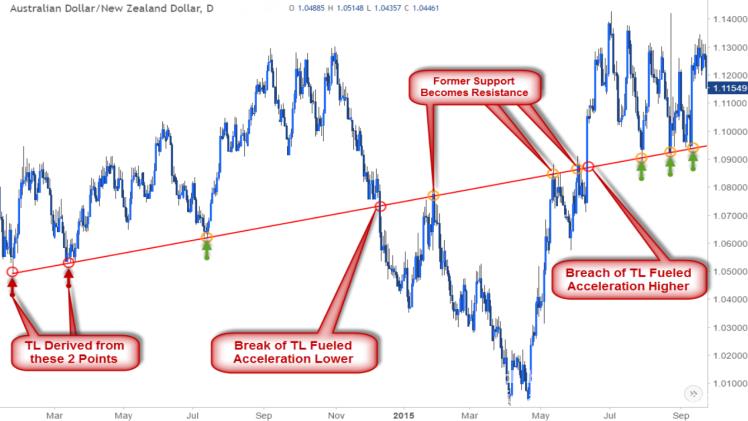How to Use Technical Analysis for Timing Your Oil and Gold Trades

Technical analysis is a powerful tool in the world of trading, and it can be especially valuable when dealing with commodities like oil and gold. These precious resources have been sought after for centuries, and traders today use technical analysis to navigate their price movements with precision. In this article, we will explore how to use technical analysis to time your oil and gold trades effectively, all while keeping an eye on the oil price forecast and integrating gold trading tips.
Understanding Technical Analysis
Before delving into the specifics of technical analysis for oil and gold trading, it’s important to understand what technical analysis is. At its core, technical analysis involves studying historical price and volume data to forecast future price movements. Traders use a range of tools and techniques to identify patterns, trends, and key levels of support and resistance.
Using Technical Analysis for Oil Trading
Technical analysis can be a valuable asset for trading oil, which is influenced by factors like supply and demand, geopolitical events, and oil price forecasts.
Here are some key technical analysis tools and tips for oil trading:
Candlestick Patterns: Study candlestick patterns to identify potential trend reversals or continuations. Patterns like doji, engulfing, and harami can provide insights into market sentiment.
Moving Averages: Moving averages, such as the simple moving average (SMA) and the exponential moving average (EMA), can help identify trends and potential reversal points.
Support and Resistance Levels: Analyze historical price levels to determine key support and resistance points. These levels often act as barriers for price movements.
Volume Analysis: Pay attention to trading volumes, as they can provide confirmation for price trends. An increase in trading volume can indicate a strong trend.
Indicators: Utilize technical indicators like the Relative Strength Index (RSI), Moving Average Convergence Divergence (MACD), and the Stochastic Oscillator to gauge momentum and overbought or oversold conditions.
When trading oil, it’s crucial to keep an eye on the oil price forecast, as this can have a significant impact on oil’s supply and demand dynamics. Geopolitical events, OPEC decisions, and technological advancements in the energy sector can all influence the oil price forecast.
Using Technical Analysis for Gold Trading
Gold, often seen as a safe-haven asset, is influenced by a different set of factors compared to oil. Geopolitical events, economic uncertainties, and changes in central bank policies can all drive gold prices.
Here’s how to apply technical analysis to gold trading effectively:
Trend Analysis: Identify trends by studying historical price charts. Look for upward or downward trends, and use trendlines to help pinpoint potential entry and exit points.
Pattern Recognition: Search for common chart patterns like head and shoulders, triangles, and flags. These patterns can provide insights into potential future price movements.
Fibonacci Retracement: Use Fibonacci retracement levels to determine potential support and resistance zones. These levels are derived from key ratios and can be used to identify price reversal points.
Volatility Measures: Monitor market volatility, as gold can be influenced by market uncertainty. Consider using indicators like Average True Range (ATR) to gauge volatility levels.
Divergence Analysis: Apply divergence analysis with indicators like the RSI and MACD to identify potential reversals or continuations in price trends.
In the world of gold trading, it’s important to remember the significance of gold trading tips. As a safe-haven asset, gold often attracts investors during times of economic and geopolitical uncertainty. Be aware of shifts in investor sentiment, central bank policies, and economic indicators, as they can have a substantial impact on gold prices.
Integration of Oil Price Forecast and Gold Trading Tips
To use technical analysis effectively for timing your oil and gold trades, it’s crucial to integrate information from the oil price forecast and gold trading tips. Here are some key considerations:
Stay Informed: Regularly check the oil price forecast and stay updated on geopolitical events that could affect both oil and gold prices.
Adapt to Market Conditions: Be flexible in your trading strategy and adapt to changing market conditions. Technical analysis is a valuable tool, but it should be used in conjunction with real-time information.
Risk Management: Manage your risk by setting stop-loss orders and defining your risk tolerance. Consider position sizing and diversification to minimize potential losses.
Long-Term vs. Short-Term: Decide whether you are a long-term or short-term trader and adjust your technical analysis approach accordingly.
Conclusion
In conclusion, technical analysis is a valuable tool for traders looking to time their oil and gold trades effectively. By using technical analysis tools and techniques, traders can gain insights into potential price movements and make informed decisions. However, it’s essential to integrate information from the oil price forecast and gold trading tips to navigate the complex and often unpredictable world of commodities trading.

